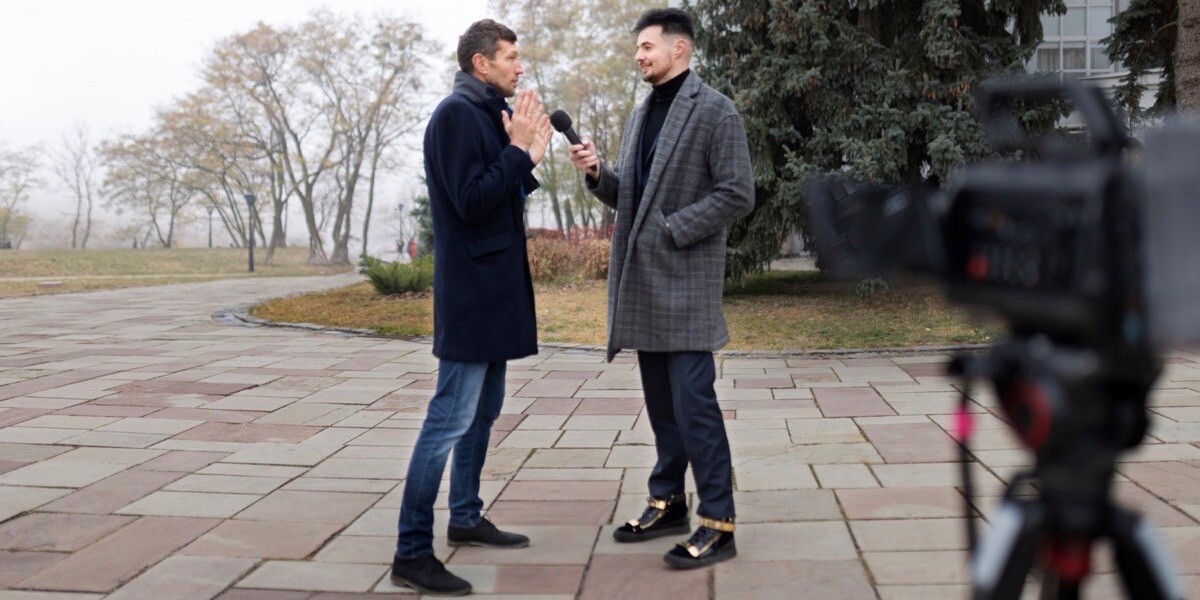
How to Tidy up an Outdoor Interview
Take a look at the video below, which features an interview with a visual artist that took place outdoors in a built up area. As you might expect, there are a lot of unwanted sounds in the recording that interfere with the interview, making the speaker’s voice difficult to focus on. We’ll show you how to remove background noise like this from outdoor recordings using the powerful audio repair plugins in the ERA Bundle.
What’s wrong with the video?
Let’s jump right in and take a look at the issues in the video that need to be fixed. Breaking down an audio repair job into sub-tasks before you start is a good way of preparing an efficient edit and repair strategy.
The main issue with the video is that the recorded audio is simply not up to scratch. Recording outdoors can be difficult, especially in a built-up area. As well as being recorded in a busy area, no measures were taken to prepare for an outdoor interview, like using a wind sock or other protective pieces of equipment. As a result, the microphone picked up quite a lot of background noise and the speaker’s voice is in danger of being overpowered. Microphones are extremely sensitive to the movement of air, and it doesn’t even have to be a particularly windy day for one to pick up a lot of unwanted noise.
The next thing is that the speaker’s voice could do with being EQ’d to save it from sounding thin and muddy. There’s also a small amount of sibilance audible in his voice, which needs to be tamed. With these issues in mind, we’ll devise a strategy that aims to enhance the clarity of the speaker’s voice and make for a more professional end product. Thankfully, with the help of the ERA Bundle, that shouldn’t be too difficult a task.
Edit and Repair Strategy
First things first, let’s load the ERA Audio Clean-Up Assistant onto an audio track in our DAW. Rather than switching back and forth between multiple plugins, we can house each of our audio repair tools in the same workspace by pulling them into one of the Clean-Up Assistant’s five slots.
The Assistant listens to your unedited voice track, meaning you don’t always have to decide what plugins you want to use yourself. By analyzing audio content and characteristics, the Assistant can then automatically generate a plugin chain in seconds.
Removing background noise
The first thing we’re going to confront is the outdoor ambience and wind noise. It’s probably the most audible problem with the recording, and will make a big difference once it’s gone. Thankfully, Noise Remover is on hand to target hisses, hums, and pretty much any unwanted artefact that’s muddying up your recording.
Loading the plugin onto the first slot in the Clean-Up Assistant, you can immediately hear that most of the background noise has been knocked off the recording. It’s not totally gone though, so we’ll turn the Processing knob up until it’s no longer audible. The perfect setting for this particular bit of audio is 68%.
Enhancing the voice
After removing the background noise the audio is left sounding a bit thin and mid-rangey, so there’s only one tool for the job. Voice AutoEQ allows you to shape the tonal character of your sound by boosting or reducing certain frequencies. The Tone Blending Triangle lets you blend between Body, Clarity and Air. The voice in this example needs more warmth, so we’ll leave the round cursor about halfway between the centre and the Body corner. You can play around with this to find the sweet spot in your own recordings.
Next up are the “ess” sounds that you can hear in the speaker’s voice. Sibilance in recordings is most often caused by sibilant consonants, but it can also just refer to a piercing, tonal harshness that’s picked up by the microphone. The outdoor recording conditions for this interview may be contributing to the sibilance in the recording, even after removing the background noise with Noise Remover.
To fix this issue we’ll load up De-Esser into the third slot on the Clean-Up Assistant, and bypass it a few times so that we can hear the initial effect it has had on the audio. Next we’ll crank the Processing knob all the way up to 75%. At this level you can really hear that the ear-piercing esses have been massaged out of the recording.
Final result
Mission complete! The final result is an interview that has greater warmth and fullness, almost inaudible background noise, and no harsh sibilance. We’ve successfully repaired a dodgy outdoor recording, making it sound more even and enjoyable to listen to. It just goes to show that you can nearly always rescue poor audio, especially when you’re using our powerful ERA audio repair plugins.

